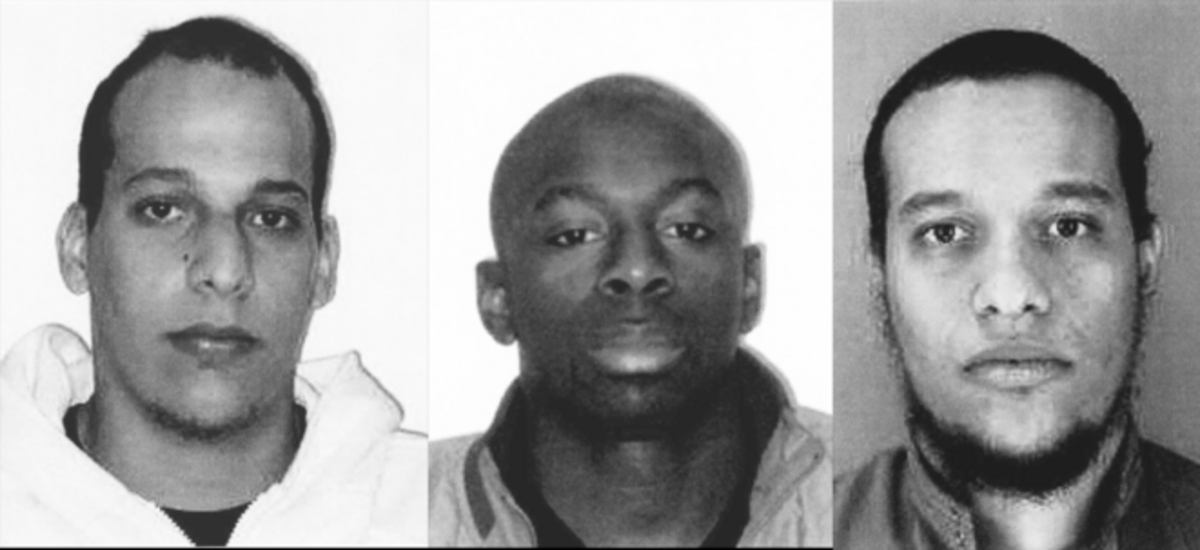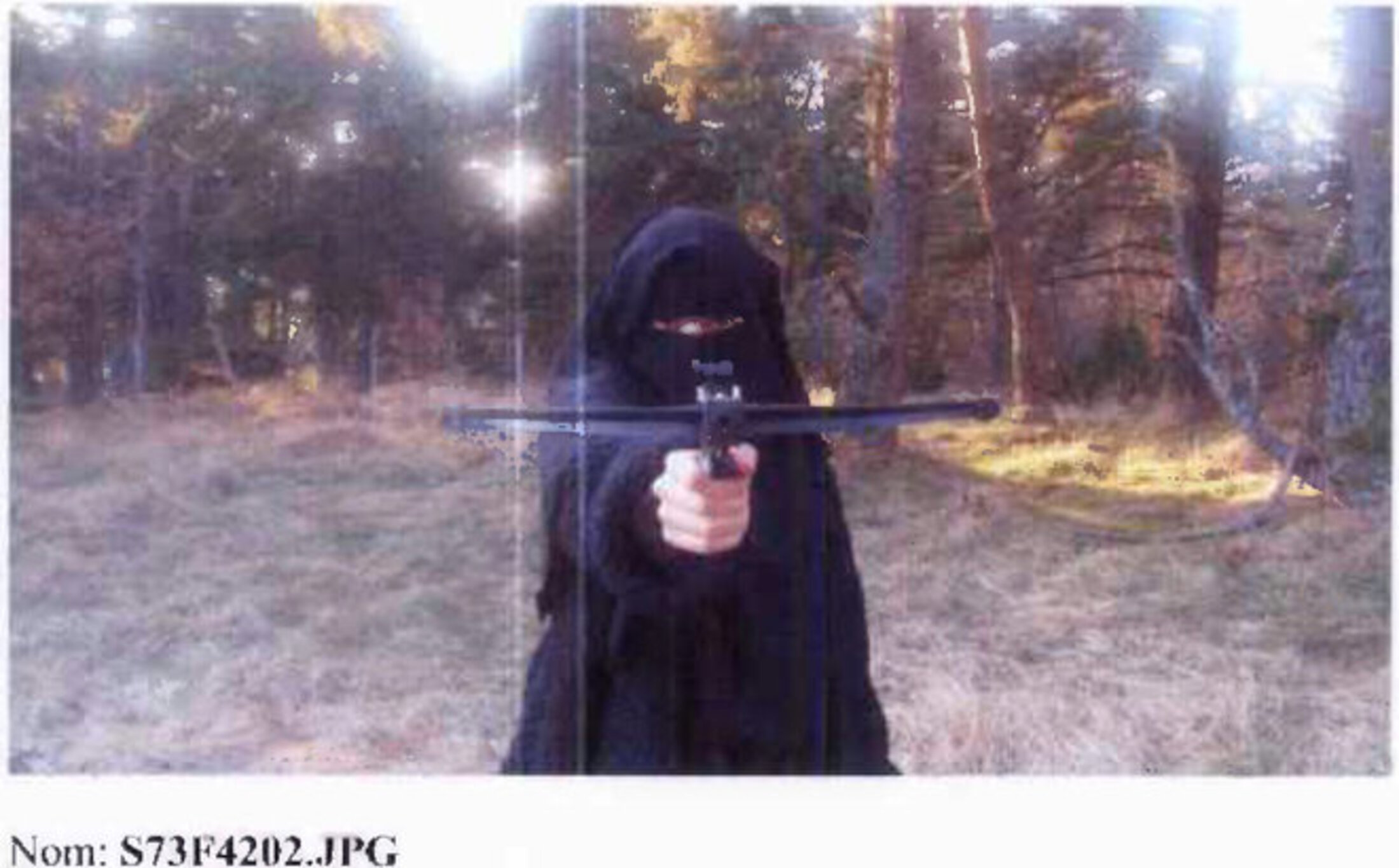The first of this two-part report can be found here.
In written conclusions of their investigations into the Charlie Hebdo shooting massacre of 12 people on January 7th 2015, and which sought to identify accomplices of the perpetrators, brothers Chérif and Saïd Kouachi, the examining magistrates in charge of the case underlined their frustration. “It results from the investigations that the Kouachi brothers left few traces behind them,” they wrote, “as demonstrated by the telephony and computer usage; they took care not to attract the attention of specialised services, limiting the company they kept, keeping to their family circle and communicating discreetly.”
Yet, as Mediapart has previously reported, 41 declassified documents from the French domestic intelligence agency, the DGSI, relating to the surveillance it undertook of the brothers between 2010 and 2015, show that, over a period of at least one year, it had several – and most probably three – moles who were close to the pair.
The documents in question were redacted to remove the most sensitive information, making it difficult to be precise on the subject. It appears that one informer was based in the town of Reims, about 140 kilometres north-east of Paris, who reported back on the activities of the eldest of the two brothers, Saïd Kouachi. In a DGSI document dated August 31st 2012, the agency noted that: “The second cooperation with [the informer] did not meet the hoped-for objectives. The information only concerned inter-family information. Saïd Kouachi remains very discreet regarding sensitive subjects and is very wary with his interlocutors.”
Another informer passed on information about when Chérif Kouachi would leave his home. A third informer, apparently of more use for the DGSI, was, it said, “placed within the environment” of the terrorist.
On June 11th 2013, one of the moles reported “the frequent contacts between the landline phone at Kouachi’s home and the [phone] line attributed to Boumeddiene Hayat”.
Hayat Boumeddiene (the DGSI document used the inversion of last and forenames often used by official services) was the female companion of Amedy Coulibaly. Over the 48 hours following the January 7th 2015 Charlie Hebdo killings, Coulibaly shot dead a policewoman in a southern suburb of Paris on January 8th, and on January 9th attacked a kosher store, the Hyper Cacher, on the south-east outskirts of Paris, where he murdered four hostages. Coulibaly, a friend of the Kouachi brothers, declared he was acting in the name of the so-called Islamic State group (IS), while the Kouachi’s claimed their massacre in the name of al-Qaeda on the Arabian Peninsular (AQAP). All three died in two separate firefights with police on January 9th 2015.

Enlargement : Illustration 1

The note concerning the phone contacts between Chérif Kouachi and Hayat Boumeddiene was the last known occasion, according to the declassified documents, that the DGSI received information about the Kouachis from informers. For unknown reasons, they ceased activity.
During surveillance of the brothers in 2012, the DGSI documents include the observation that Saïd Kouachi “spends a large part of his time taking part in online video games with his brother Chérif”. The most popular of these was shooter game Call of Duty, apparently popular among jihadists. The advantage for them is that players can chat between themselves during the game, unheard by the electronic ears of anyone else, including the police.
While Amedy Coulibaly’s personal computer, which he used in the preparation for his attacks, was found by police, little personal information was extracted. His emails, internet searches and navigation history had been systematically wiped clean. He used micro-Secure Digital cards and USB memory sticks to record data and leave as little trace as possible on his computer.
On January 2nd 2015, Hayat Boumeddiene, who by then had married Coulibaly in a religious ceremony, boarded a plane in Madrid to travel to Istanbul, in the company of a man called Mehdi Belhoucine. A few hours after their plane left, Mehdi’s elder brother Mohamed Belhoucine, a former student at an engineering school in Albi, south-west France, also left Madrid on board another flight for Istanbul, along with his wife and their young son. Altogether, they represented the inner circle of Coulibaly’s accomplices, and effectively disappeared into the Middle east six days before Coulibaly was to begin his attacks.
Hayat Boumeddiene and Mohamed and Mehdi Belhoucine are among the 14 defendants at the trial in Paris, which opened on September 2nd, charged with complicity in the January 7th-9th 2015 terrorist attacks. But all three are absent (the eleven others are present and their whereabouts – and even whether they are still alive – is unknown.
Mohamed Belhoucine is accused of complicity in Coulibaly’s attacks, and like Ali Riza Polat, a French citizen of Turkish-Kurd origin who is present at the trial (see the first of this two-part report), faces a sentence of life in jail if found guilty. Convicted several years ago in France for both his involvement in a network that sent jihadists to Afghanistan and for disseminating al-Qaeda propaganda, Mohamed Belhoucine was a religious mentor for Coulibaly.
Belhoucine’s handwriting was identified on the text read out on a video recording by Coulibaly in which the latter declared his allegiance to Abu Bakr al-Baghdadi, the then leader of the Islamic State (IS) group, in the name of which Coulibaly committed the January 2015 attacks. Belhoucine is accused of playing an operational role by creating internet addresses used by Coulibaly for communicating with an unidentified individual who gave him instructions. While the investigating magistrates noted that it cannot be “formally established” that either of the two had direct contact with the person giving orders for the attacks, “it appears probable with regard to the use of the addresses […] and the contents of the messages”.
The mystery surrounding Hayat Boumeddiene
Mohamed Belhoucine’s younger brother Mehdi, a former student in mechanical engineering at the Jussieu university in Paris, is charged with helping Hayat Boumeddiene to escape France just before her partner Coulibaly carried out the attacks. He faces a maximum jail sentence of 20 years.
According to unconfirmed reports, Mehdi Belhoucine died in the spring of 2015 from septicaemia after he was wounded in fighting in Iraq, while his brother Mohamed was reportedly killed later that year in fighting in Syria. But there remains no certainty over their deaths.
There is also mystery over Hayat Boumeddiene. There have been conflicting reports as to whether she is still alive, but if she is, her exact whereabouts are unknown. In the aftermath of the January 2015 attacks, she became in France a symbol of what until then was the little realised involvement of women in jihadism, notably when the media were issued with pictures of her, taken by Coulibaly in 2010, of her dressed in a niqab and wielding a crossbow in countryside in the Cantal region of central France. In one of the photos (see below), she points her weapon straight at the camera in a warrior-like pose.

Enlargement : Illustration 2

Making use of her notoriety in France, the IS group dedicated two pages to her in a February 2015 edition of its French-language propaganda magazine Dar al-Islam, with the headline “That Allah curse France”, and the interview with her that was included was later translated into English for another jihadist publication.
In the months that followed her arrival amid the IS caliphate in the Syria-Iraq region, she began calling close contacts in France. In one tapped conversation, which she could only have held with the authorisation of the IS, she claimed that she was not involved in the January 2015 attacks. She said Coulibaly had asked her to travel to Syria saying to her “Don’t worry, I’ll soon join you”.
Her denials have not convinced the investigation into the attacks: in the months leading up to them, Boumeddiene committed, with Coulibaly, a series of successful fraudulent credit applications, using false pay slips and tax returns, which allowed them to buy three cars that were just as soon sold on to provide them with ready cash. That was used to buy weapons for Coulibaly. She has been charged with “financing terrorism” and “associating with terrorists”, and if found guilty at the trial, in absentia, she faces a maximum jail sentence of 20 years.
The examining magistrates leading the investigations cited a tapped phone conversation in which she, from Syria, spoke of the attacks with a female correspondent in France. Boumeddiene, wrote the magistrates, “doesn’t express her surprise but [rather] her satisfaction”. During the phone conversation, the other woman asked her: “Did you manage the shock when you saw the images and all that?” To which Boumeddiene replied: “Me, I tell you frankly, I am very happy. It’s just that, well, you saw, it’s normal, I miss him. You see, it’s my husband, I love him and all that.”
During that conversation, there was not one word for the policewoman and the four men hostages at the Hyper Cacher store who Coulibaly murdered. Boumeddiene did, meanwhile, comment that if she had stayed in France at the time of the attacks she would “also be in the shit”.
Boumeddiene also spoke of her contentment at being in Syria amid the ranks of IS, who gave her personal close protection. “They’re diamonds here, the people here are treasures,” she said. As the widow of what the jihadists considered to be a heroic martyr, she was given preferential treatment. “I am in a house [the likes of which] I have never seen in my life,” she said. “They look after me as if I was a princess. I came here as if I was a princess.”
In March 2019, by which time the IS had been militarily defeated in Syria and Iraq, the wife of Jean-Michel Clain, the French jihadist who in an audio recording claimed responsibility for the November 13th 2015 Paris terrorist attacks in the name of IS, told European journalists visiting the Kurd-controlled refugee and prisoner camp of al-Hawl, in north-east Syria, that Boumeddiene was dead. “We can’t tell you in what conditions, the time when it was, everything was a rush these last days,” she was quoted as saying.
But contradicting that account was a statement given by a woman jihadist returning to France from Syria at the end of last year. She was the wife of Abdelnasser Benyoucef, an Algerian national who was a senior member of IS. The woman said she knew that Boumeddiene was alive in October 2019. According to the woman’s statement, Boumeddiene, who if still alive is today aged 32, was held for a while in the al-Hawl camp where she used a false identity, before escaping from it to avoid her possible extradition to France.
The woman’s husband, Abdelnasser Benyoucef, is believed by French intelligence to have been instrumental in creating the IS branch that planned attacks in France and Europe, and he is notably suspected of commanding a planned but failed attack against a church in the Paris suburb of Villejuif in April 2015.
According to French public broadcaster France 2, which first revealed the woman revenant’s statement, French intelligence sources said they considered the account as “credible” because it corroborated “earlier indications” about Boumeddiene received in the summer of 2019.
-------------------------
- The first article in this two-part report can be found here.
- Both can be found in the original French version here.
-------------------------
If you have information of public interest you would like to pass on to Mediapart for investigation you can contact us at this email address: enquete@mediapart.fr. If you wish to send us documents for our scrutiny via our highly secure platform please go to https://www.frenchleaks.fr/ which is presented in both English and French.
-------------------------
English versions by Graham Tearse


